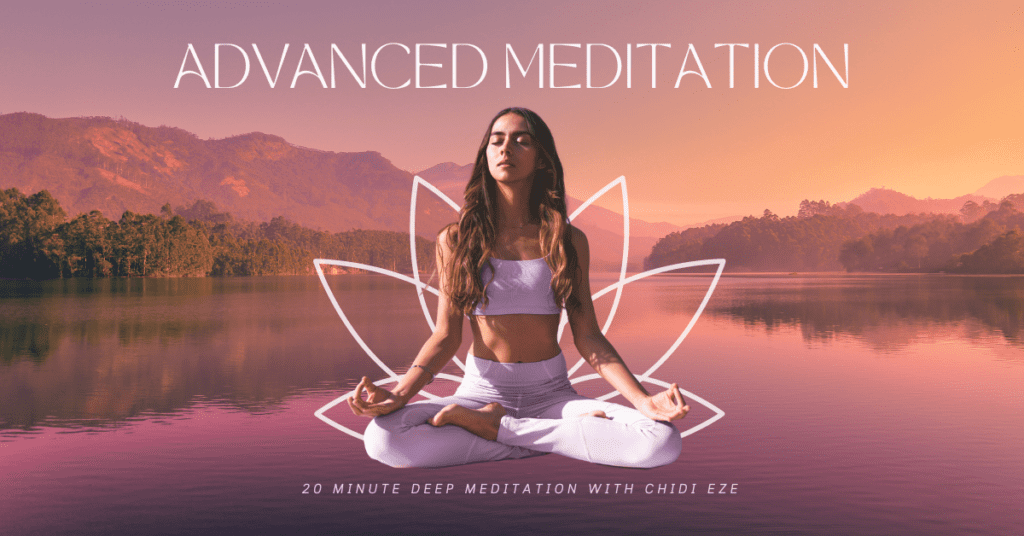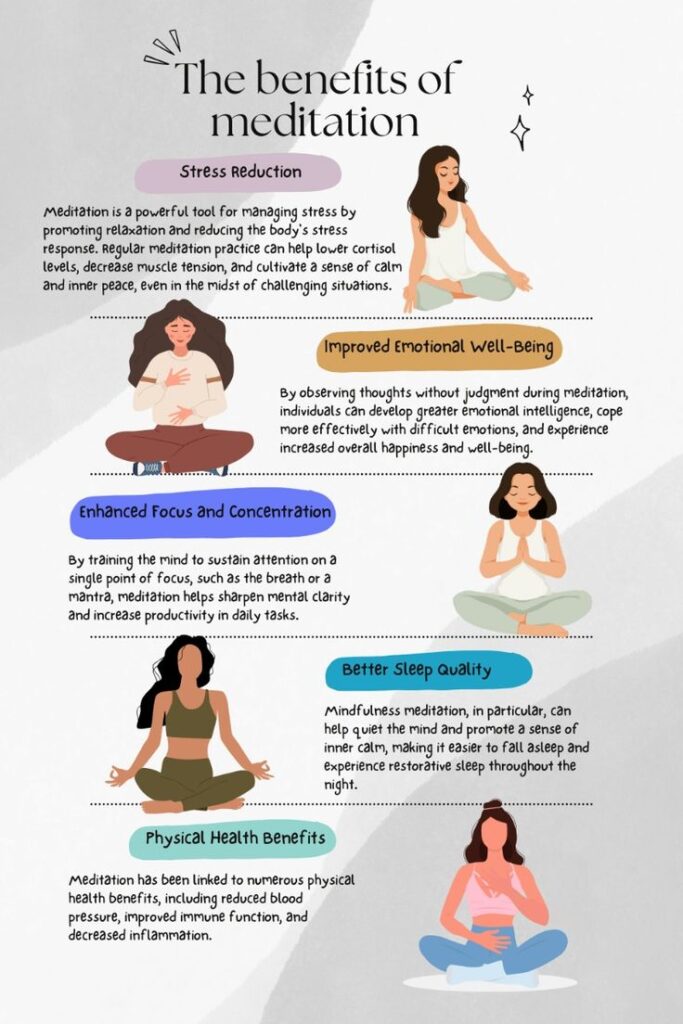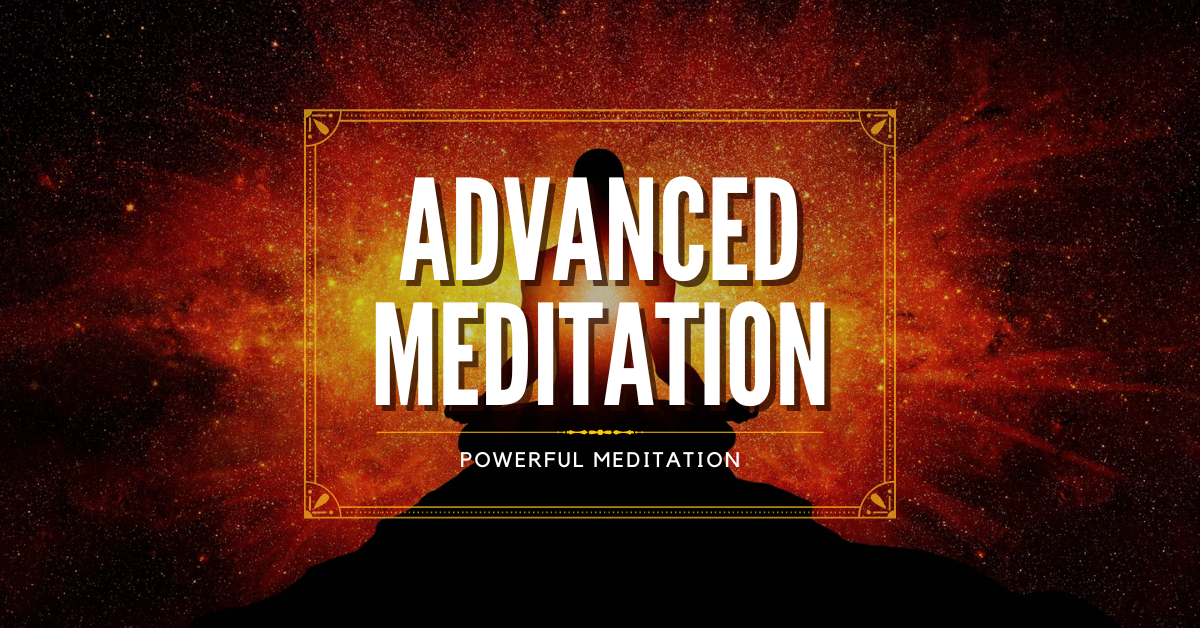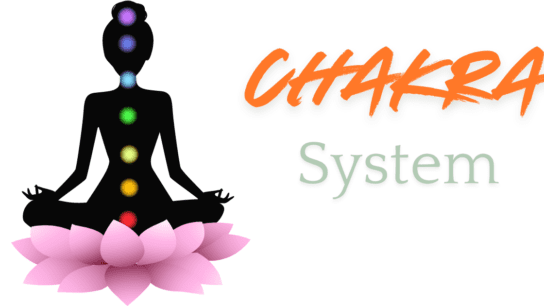Introduction.
Meditation is more than just a practice Yoga; it’s a journey into the depths of your mind and soul. While many begin with basic techniques that introduce them to mindfulness and relaxation, there comes a point where the desire to explore deeper, more profound states of consciousness emerges. This is where advanced meditation comes into play.
Advanced meditation is not merely about extending the duration of your sessions or sitting in stillness for longer periods. It’s about deepening your connection with the present moment, enhancing your self-awareness, and unlocking new levels of spiritual and mental clarity. This guide will take you through the different aspects of Meditation Script for Anxiety, offering insights, techniques, and guidance on how to elevate your practice.

1. Understanding Advanced Meditation
1.1 What is Advanced Meditation?
Advanced meditation refers to practices that go beyond the foundational techniques of mindfulness or simple breath awareness. These practices often involve a more profound focus on the inner workings of the mind, the cultivation of specific states of consciousness, and the exploration of spiritual dimensions. Advanced meditation alters consciousness and our basic sense of self, aiming for a deeper understanding and experience of reality.
While beginner meditation might focus on calming the mind and reducing stress, advanced meditation seeks to transcend ordinary experiences. It involves working with subtle energies, deep concentration, and sometimes, exploring non-dual states of awareness where the distinction between self and the universe blurs. This might include advanced Buddhist meditation techniques or advanced tibetan meditation.
1.2 The Evolution of Your Practice
Meditation is often described as a journey, and like any journey, it evolves over time. When you first start meditating, the focus is typically on developing basic skills: learning to sit still, bringing awareness to the breath, and noticing when the mind wanders. As you become more comfortable with these practices, you may find yourself naturally progressing towards more advanced techniques.
The transition to advanced meditation is not about abandoning the basics; rather, it’s about building upon them. The breath, for example, remains a foundational tool, but in advanced practices, you might use it to anchor yourself in a deeper state of consciousness or as a vehicle for exploring more subtle aspects of the mind. Techniques such as advanced breathing techniques for meditation and advanced concentrative absorption meditation play a role here.
2. Advanced Meditation Techniques
2.1 Transcendental Meditation

2.1.1 Overview of Transcendental Meditation
Transcendental Meditation (TM) is one of the most widely practiced forms of advanced meditation. It was popularized in the West by Maharishi Mahesh Yogi in the 1950s and has since been practiced by millions around the world. TM is characterized by the use of a specific mantra—a sound or phrase—that is repeated silently to help the mind transcend ordinary thought processes.
The goal of TM is to reach a state of restful alertness, where the body is deeply relaxed, but the mind remains fully awake. This state is said to promote deep relaxation, reduce stress, and enhance creativity and intelligence. TM is a form of advanced transcendental meditation, which is part of a broader category of transcendental meditation advanced techniques.
2.1.2 The Science Behind Transcendental Meditation
Numerous studies, including those covered in Scientific American articles on advanced meditation, reveal its potential to reduce stress, lower blood pressure, and improve overall well-being. The practice is thought to work by allowing the mind to settle into a state of “pure consciousness,” free from the distractions of ordinary thought.
When practicing TM, the mantra acts as a vehicle for the mind to dive inward, bypassing the more active levels of consciousness and accessing a more profound state of restful awareness. This process is often described as “effortless,” in contrast to other forms of meditation that require concentrated focus.
2.2 Vipassana Meditation
2.2.1 What is Vipassana Meditation?
Vipassana, which means “insight” or “clear seeing,” is an ancient form of meditation that originated in India over 2,500 years ago. It was rediscovered by Gautama Buddha and forms the foundation of Buddhist meditation practices. Advanced Vipassana meditation focuses on observing thoughts and sensations with a high degree of insight and equanimity.
The core of Vipassana meditation is the practice of mindfulness or the continuous observation of your thoughts, emotions, and sensations as they arise. The aim is to develop a deep, experiential understanding of the impermanent, unsatisfactory, and selfless nature of all phenomena.
2.2.2 The Practice of Vipassana
Vipassana meditation begins with the observation of the breath (anapana), which helps to calm the mind and sharpen concentration. Once the mind is sufficiently focused, the practitioner shifts attention to the sensations in the body, observing them without judgment or attachment. This advanced Buddhist meditation technique leads to the development of equanimity and insight into the nature of experience.
2.3 Guided Visualization
2.3.1 Introduction to Guided Visualization
Guided visualization is a powerful meditation technique that involves focusing the mind on specific images or scenarios, often led by a teacher or a recording. This practice is particularly effective for those who find it challenging to quiet the mind or who wish to use meditation to achieve specific goals, such as healing or emotional transformation. Advanced guided meditation incorporates vivid imagery to facilitate deep mental and emotional shifts.
2.3.2 Techniques of Guided Visualization
In guided visualization, the practitioner is led through a series of mental images designed to evoke certain feelings or states of mind. For example, a common practice might involve visualizing a peaceful, natural setting, such as a forest or a beach, and immersing oneself fully in the sights, sounds, and sensations of that place.
This type of meditation can also be used for more specific purposes, such as visualizing the healing of a physical ailment, releasing emotional blockages, or manifesting desired outcomes in one’s life. Guided meditation advanced techniques can help achieve these goals more effectively.
2.4 Mantra Meditation
2.4.1 Understanding Mantra Meditation
Mantra meditation is a practice that involves the repetition of a word, phrase, or sound (mantra) to focus the mind and enter deeper states of consciousness. Mantras can be spoken, chanted, whispered, or repeated silently, and are often chosen for their spiritual significance or vibrational quality.
The repetition of the mantra helps to quiet the mind and remove distractions, allowing the practitioner to enter a state of deep meditation. Over time, the mantra becomes a tool for transcending ordinary thoughts and connecting with a higher state of consciousness. Cosmic consciousness and advanced mantra meditation are examples of practices that utilize mantras for profound spiritual experiences.
2.4.2 Choosing a Mantra
Selecting a mantra is an important aspect of this practice. Some mantras are universal, such as “Om,” which is considered the sound of the universe and is commonly used in many spiritual traditions. Others may be personal, chosen based on individual needs, intentions, or guidance from a teacher.
The mantra should resonate with the practitioner on a deep level, as its repetition will shape the meditative experience and influence the mind’s focus. As the practice deepens, the mantra may take on new meanings and layers of significance.
2.4.3 The Benefits of Mantra Meditation
Mantra meditation offers numerous benefits, including the ability to calm the mind, enhance concentration, and foster spiritual growth. The vibrational quality of the mantra is also believed to have a purifying effect on the mind and body, helping to release negative energy and promote healing.
Moreover, the consistent repetition of the mantra can lead to a state of transcendence, where the practitioner experiences a sense of unity with the mantra, the self, and the universe. Techniques such as Vedic meditation advanced technique fall into this category, offering unique benefits.
3. The Benefits of Advanced Meditation

3.1 Mental Clarity and Focus
Advanced meditation practices are known for their ability to sharpen the mind and enhance mental clarity. By focusing on more profound states of awareness, practitioners can experience a greater sense of mental acuity, which can benefit all areas of life.
3.1.1 Enhanced Concentration
One of the primary benefits of advanced meditation is improved concentration. Techniques such as advanced concentrative absorption meditation and advanced mindfulness meditation require a high level of focus, which, over time, can translate into greater concentration in daily activities. This heightened focus can lead to better productivity, creativity, and problem-solving abilities.
3.1.2 Mental Stillness
In addition to sharpening the mind, advanced meditation can also bring about a profound sense of mental stillness. This state of inner peace is characterized by the absence of mental chatter and a deep sense of calm. This stillness allows the practitioner to experience life with greater clarity and insight, free from the distractions of the mind.
3.2 Emotional Balance
Meditation has long been recognized for its ability to promote emotional well-being. Advanced practices take this a step further by helping practitioners cultivate deep emotional resilience and balance.
3.2.1 Understanding and Managing Emotions
Through practices like advanced Vipassana meditation and advanced guided meditation, practitioners can gain a deeper understanding of their emotions and how they manifest in the body. This awareness allows them to manage their emotions more effectively, reducing the impact of negative emotions such as anger, fear, and anxiety.
3.2.2 Cultivating Positive Emotions
Advanced meditation also helps to cultivate positive emotions, such as compassion, gratitude, and joy. Practices like loving-kindness meditation (met
ta) and other advanced techniques foster these emotions, contributing to a more fulfilling and harmonious life.
3.3 Spiritual Growth
Advanced meditation offers profound opportunities for spiritual growth and transformation. By exploring deeper states of consciousness and transcending the ordinary self, practitioners can experience a sense of unity with the universe and a deeper connection with their spiritual essence.
3.3.1 Connecting with the Higher Self
One of the primary goals of advanced meditation is to connect with the higher self or inner spiritual essence. Practices such as art of living advanced meditation program and advanced transcendental meditation are designed to facilitate this connection, allowing practitioners to experience a greater sense of purpose and alignment with their true nature.
3.3.2 Experiencing Non-Dual Awareness
Advanced meditation often involves exploring non-dual awareness, where the distinction between self and other dissolves. This state of consciousness, often referred to as cosmic consciousness, allows practitioners to experience a profound sense of unity with all existence. Techniques like scientific american advanced meditation studies provide insights into this transformative aspect of advanced meditation.
4. Tips for Progressing to Advanced Meditation
4.1 Consistency is Key
To progress in advanced meditation, consistency is crucial. Developing a regular practice helps to build the skills and awareness needed for deeper meditation. Setting aside dedicated time each day and sticking to a routine will support your growth and development.
4.1.1 Building a Strong Foundation
Before diving into advanced techniques, ensure you have a solid foundation in basic meditation practices. Techniques such as mindfulness and breath awareness form the basis for more advanced practices and should be well established before moving on to more complex methods.
4.1.2 Setting Realistic Goals
As you advance in your practice, set realistic goals for yourself. This might involve gradually increasing the duration of your meditation sessions or exploring new techniques as you feel ready. Avoid pushing yourself too hard, and instead focus on the gradual, steady development of your practice.
4.2 Patience and Perseverance
Meditation is a journey that requires patience and perseverance. It’s important to approach your practice with an open mind and a willingness to embrace the process.
4.2.1 Embracing the Journey
Recognize that meditation is not just about achieving a specific outcome but about the journey itself. Each session is an opportunity for growth and self-discovery, regardless of the immediate results.
4.2.2 Overcoming Challenges
Challenges are a natural part of any advanced practice. Whether dealing with mental distractions, physical discomfort, or emotional blockages, view these challenges as opportunities for growth. Techniques such as advanced meditation tips and seeking guidance from experienced practitioners can be helpful.
4.3 Seeking Guidance
Having guidance from an experienced teacher or joining an advanced meditation program can be incredibly beneficial. Advance meditation course and advanced meditation retreats provide structured environments where you can deepen your practice and receive personalized support.
4.3.1 Finding a Teacher
An experienced meditation teacher can offer valuable insights, techniques, and support tailored to your individual needs. Look for teachers who specialize in advanced techniques or who have experience with practices such as advanced Tibetan meditation or advanced guided meditation.
4.3.2 Joining a Meditation Group
Being part of a meditation group can provide motivation, community, and shared learning experiences. Many groups focus on advanced practices and can offer a supportive environment for exploring deeper states of consciousness.
5. Common Challenges in Advanced Meditation and How to Overcome Them
5.1 Dealing with Mental Distractions
One common challenge in advanced meditation is dealing with mental distractions. It’s natural for the mind to wander, but with advanced techniques, you can learn to manage these distractions more effectively.
5.1.1 Recognizing and Using Distractions
When distractions arise, recognize them without judgment and gently guide your attention back to your meditation object. Advanced practices, such as advanced mindfulness meditation, can help you develop greater awareness and control over your mental focus.
5.2 Overcoming Physical Discomfort
Physical discomfort can also be a challenge, particularly during long meditation sessions or advanced practices. Finding a comfortable posture and using supports as needed can help alleviate discomfort.
5.2.1 Finding a Comfortable Posture
Experiment with different meditation postures and supports to find what works best for you. Techniques such as advanced breathing techniques for meditation can also help manage physical discomfort by promoting relaxation and ease.
5.2.2 Mindfully Observing Discomfort
Instead of resisting physical discomfort, practice observing it mindfully. This approach can help you develop a greater tolerance for discomfort and reduce its impact on your practice.
5.3 Navigating Emotional Blockages
Emotional blockages can arise during advanced meditation, especially when exploring deep-seated issues or traumas. Techniques such as advanced Tibetan meditation documentary and seeking support from a therapist or teacher can be beneficial.
5.3.1 Allowing Emotions to Arise
Allow emotions to surface during your practice without attaching to them. Observing them with mindfulness and compassion can help you process and release emotional blockages.
5.3.2 Seeking Support
If you encounter persistent emotional challenges, consider seeking support from a qualified therapist or meditation teacher. They can provide guidance and techniques to help you navigate and overcome these issues.
Conclusion
Advanced meditation offers a profound opportunity for growth and transformation. By exploring deeper levels of awareness and employing advanced techniques, you can experience enhanced mental clarity, emotional balance, and spiritual connection. Embrace the journey of advanced meditation with patience, perseverance, and an open heart, and allow yourself to unlock the deeper dimensions of your consciousness.
Whether you’re exploring advanced meditation books, enrolling in an advance meditation course, or attending advanced meditation retreats, each step you take on this path brings you closer to a deeper understanding of yourself and the universe.
1. Who is an advanced meditator?
An advanced meditator is someone who has moved beyond the basics of meditation practice and has developed a deeper understanding and mastery of more complex techniques. They typically have a well-established foundation in meditation and regularly engage in advanced practices that involve deeper states of consciousness, refined concentration, and sophisticated methods for personal and spiritual growth. Advanced meditators often integrate techniques such as advanced Buddhist meditation techniques, advanced Vipassana meditation, and transcendental meditation advanced techniques into their practice.
2. What is the best meditation book for advanced practitioners?
For those looking to deepen their practice, several books offer valuable insights into advanced meditation techniques. Some highly recommended titles include:
“The Mind Illuminated: A Complete Meditation Guide Integrating Buddhist Wisdom and Brain Science” by Culadasa (John Yates)
“The Heart of the Buddha’s Teaching: Transforming Suffering into Peace, Joy, and Liberation” by Thich Nhat Hanh
“Cosmic Consciousness: A Course in Advanced Mantra Meditation” by Richard Maurice Bucke
“Advanced Meditation Techniques” by the author of your choice, based on your specific interests.
These books cover various advanced practices, from detailed instructions on advanced mindfulness meditation to exploring the spiritual dimensions of advanced mantra meditation.
3. What is advanced meditation?
Advanced meditation refers to practices that go beyond basic techniques and involve deeper states of consciousness, enhanced mental focus, and spiritual exploration. It encompasses methods such as advanced transcendental meditation, advanced concentrative absorption meditation, and advanced guided meditation. These practices aim to transcend ordinary awareness and connect with more profound aspects of the self and the universe.
4. What happens when an advanced meditator uses the Radiac appliance?
The Radiac appliance is not commonly associated with mainstream meditation practices and might be a specialized or less widely known tool. Generally, advanced meditators focus on deepening their practice through traditional methods like advanced breathing techniques for meditation or advanced meditation retreats. If the Radiac appliance is a specific tool related to advanced meditation, it would be important to refer to its specific guidelines and intended use as outlined by its creators or practitioners.
5. What happens in advanced meditation?
In advanced meditation, practitioners experience deeper states of awareness and consciousness. They might encounter heightened states of mental clarity, emotional balance, and spiritual insight. Advanced meditation can lead to profound shifts in perception, increased self-awareness, and a sense of unity with the universe. Techniques such as advanced Tibetan meditation and transcendental meditation advanced techniques often result in enhanced inner peace and expanded consciousness.
6. What happens during advanced meditation?
During advanced meditation, practitioners typically engage in more sophisticated techniques that involve greater focus and subtlety. This may include practices like advanced mindfulness meditation or advanced Vipassana meditation, where the practitioner explores deeper layers of consciousness and experiences a heightened sense of presence. The process often involves transcending ordinary thoughts and achieving a state of deep relaxation and insight.
7. What does advanced meditation feel like?
Advanced meditation can evoke a range of experiences depending on the individual and the specific techniques used. Common sensations include a deep sense of inner peace, clarity of mind, and heightened awareness. Practitioners might feel a profound connection with their inner self and a sense of unity with the universe. Techniques like advanced guided meditation and transcendental meditation advanced techniques often lead to experiences of transcendence and cosmic consciousness.
8. Is Headspace good for advanced meditators?
Headspace is primarily known for its user-friendly approach to meditation and mindfulness, offering guided sessions that are accessible to beginners and intermediate practitioners. While it may provide some benefits to advanced meditators, those seeking more specialized advanced techniques, such as advanced Buddhist meditation techniques or advanced mantra meditation, might find it more beneficial to explore dedicated resources, advanced courses, or advanced meditation retreats that cater specifically to their level of practice.
9. How to meditate advanced?
To engage in advanced meditation, practitioners should build upon their basic meditation skills by incorporating more complex techniques and deeper practices. This might include exploring advanced breathing techniques for meditation, advanced transcendental meditation, or advanced concentrative absorption meditation. It’s important to cultivate a consistent practice, seek guidance from experienced teachers, and remain open to exploring various methods to deepen your meditation experience.
10. How to do Transcendental Meditation advanced techniques?
Transcendental Meditation (TM) involves the use of a specific mantra to transcend ordinary thinking. Advanced TM techniques typically involve prolonged and deeper sessions where the practitioner explores the subtler layers of consciousness. To practice advanced TM techniques, you should ideally have a solid foundation in basic TM and work with a certified TM teacher who can guide you through the advanced aspects of the practice.
11. How to do advanced meditation?
To practice advanced meditation, start by deepening your understanding and practice of foundational techniques. Incorporate more complex methods such as advanced mindfulness meditation, advanced Vipassana meditation, or advanced Tibetan meditation. It’s essential to maintain a regular practice, explore various advanced techniques, and possibly seek guidance from experienced meditation teachers or participate in advanced meditation programs to support your progress.
12. How to advance your meditation?
Advancing your meditation practice involves consistently working on refining your techniques and exploring deeper aspects of consciousness. Engage in practices such as advanced breathing techniques for meditation, attend advanced meditation retreats, or study advanced meditation books to deepen your knowledge and experience. Regular practice, patience, and openness to new methods will help you progress in your meditation journey.
13. How to advance in meditation?
To advance in meditation, focus on expanding your practice beyond basic techniques. This can involve experimenting with advanced Buddhist meditation techniques, joining advanced meditation courses, and exploring advanced mantra meditation. It’s beneficial to have a regular meditation schedule, seek feedback from experienced practitioners, and continually challenge yourself with new practices and deeper levels of concentration.
14. How are Transcendental Meditation advanced techniques performed?
Advanced techniques in Transcendental Meditation involve extended and deeper sessions of mantra repetition, which help practitioners explore more profound states of consciousness. These techniques are typically taught by certified TM instructors and may include practices such as prolonged meditation sessions and advanced mantra techniques designed to deepen the meditation experience and enhance the state of restful awareness.
15. Are there advanced meditations in Gaudiya Vaishnavism?
Yes, Gaudiya Vaishnavism, a tradition within the broader context of Vaishnavism, offers advanced meditation practices focused on devotion to Lord Krishna. These practices often include intricate devotional rituals, advanced forms of chanting (bhakti), and deep meditation on divine attributes and pastimes. Practitioners may engage in advanced transcendental meditation techniques that align with the spiritual goals of Gaudiya Vaishnavism.
16. A course in advanced mantra meditation
A course in advanced mantra meditation typically involves learning and practicing sophisticated mantra techniques to deepen spiritual insight and consciousness. These courses often include detailed instruction on mantra selection, pronunciation, and the vibrational effects of mantras. They may also cover advanced practices such as Cosmic Consciousness: A Course in Advanced Mantra Meditation, which provides a structured approach to exploring the transformative power of mantra meditation.





[…] texts, including the Vedas and Tantras, and have been integral to practices such as yoga and advance meditation for centuries. Over time, the chakra system has been adopted and adapted by various cultures, each […]